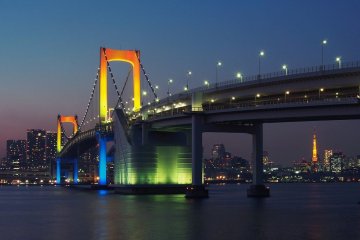
Odaiba's Rainbow Bridge
AshThe Rainbow Bridge links Tokyo with the man-made island of Odaiba.

The Rainbow Bridge (レインボーブリッジ, Reinbōburijji) built in 1993, is a 800 meter long suspension bridge which links Tokyo with the man-made waterfront Odaiba. You can walk across the bridge, however cycling is forbidden. The lights of the bridge change depending on special occasions and the rainbow colors appear during holiday season.
Shibaura-futo Station on the Tokyo side, Odaiba-kaihinkoen Station on the Odaiba side (both Yurikamome Line)

The Rainbow Bridge links Tokyo with the man-made island of Odaiba.
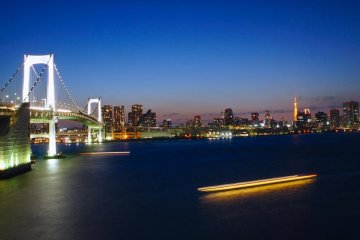
Walking over the Rainbow bridge in the evening offers stunning views of the city, which cannot be enjoyed the same way in the car.
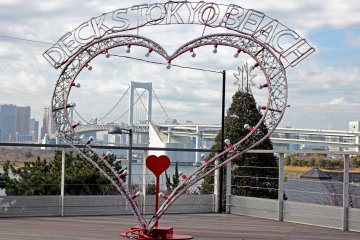
Tokyo's Rainbow Bridge: Walk over to the reclaimed land area of Odaiba, enjoy the architecture and great views of the Tokyo Bay area.
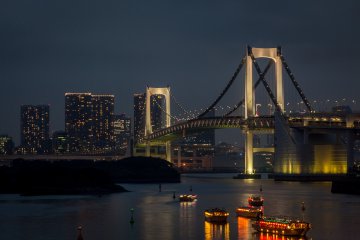
Walking over Tokyo Bay's Rainbow Bridge at dusk in summer, including night views from Odaiba.
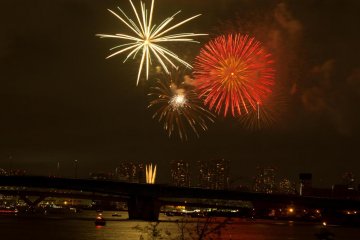
Tokyo Bay Fireworks: The Japanese are famous for their attention to detail and perfection, and this also applies to the design of the famous 'hanabi' events in summer.

ANA Holiday Inn Tokyo Bay (previously Dai-ichi Hotel Tokyo Seafort) is a 132-room hotel that will provide visitors to Japan’s capital city with an attractive, fresh option in the midscale space. ANA Holiday Inn Tokyo Bay will join a strong portfolio of 10 ANA Holiday Inn open and pipeline hotels across Japan, and become part of the brand’s global footprint of 1,234 open hotels and 278 pipeline properties.
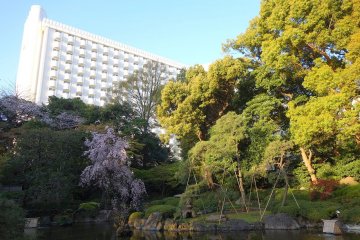
Just minutes from Shinagawa Station, the Grand Prince Hotel New Takanawa is surrounded by lush greenery in the Takanawa area, with rooms offering balcony views of the nearby gardens and the surrounding Tokyo cityscape. This urban resort features convention facilities like the Hiten banquet hall, the international Convention Center Pamir, as well as a wide variety of Japanese, Chinese and Western restaurants.

Oakwood Premier Tokyo comes from a brand of standout luxury hotel & service apartments right at the heart of the Tokyo metropolis. It is located in the business hub of Marunouchi with JR Tokyo Station in close proximity. This will allow guests and travelers to easily access the city's extensive transport network and visit various landmarks such as Imperial Palace, Tsukiji Fish Market, Ginza and Shopping District. Boasting 123 luxurious apartments on the upper floors of a multi-serviced complex, each room offers a magnificent view of the city, not to mention all furnished and a fully-equipped kitchen set which is rarely seen in your everyday service apartment. Without doubt, these spacious tranquil retreats are curated to give you the amenities and services of a luxury hotel and a feeling of home. They are good options for both business executives and leisure travelers from one night of a short-stay to a few weeks/months of mid-to-long-term stay.
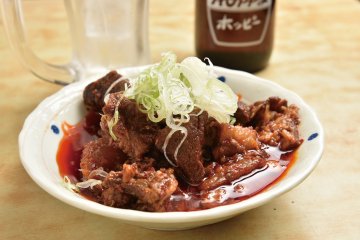
One of the long-established restaurants in the area, it is always packed. But since there are also seats on the second floor, customer turnover is quick. The Spicy Beef Tendon Stew made by stewing high-quality meat from the neighborhood butcher with Korean spices is popular.
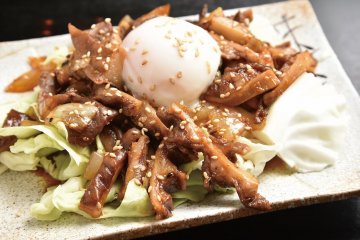
Motsu (offal) is their signature item, and they offer not the common motsu-yaki, but stir-fried motsu with different flavors depending on the type of offal meat. The stir-fried beef Abomasum eaten with a traditional sauce passed down over many years is popular.

This restaurant offers a selection of foods that will keep you drinking, such as stew made with fresh meat and stir-fried offal, etc. You'll want to enjoy them with makgeolli, or Junnama Makko-bee that combines makgeolli and beer.
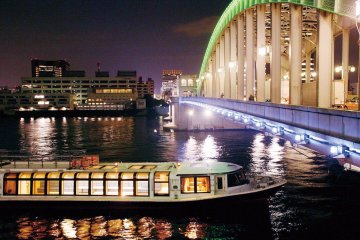
Chartered cruises and onboard parties are popular here, and groups from one person or more can board. From Tokyo Skytree in the north to Tokyo Gate Bridge in the south, fully experience Tokyo nights onboard an opulent cruise ship.
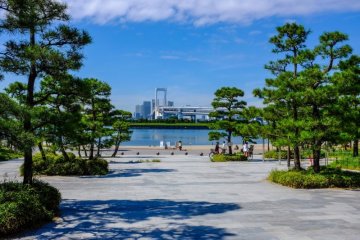
Odaia Marine Park (お台場海浜公園), also known as Odaiba seaside park, is a park located on the edge of Tokyo bay facing the city's skyline and the Rainbow bridge.
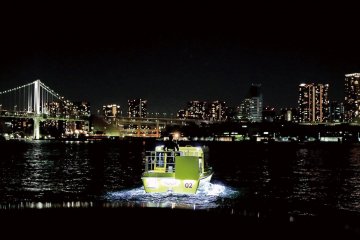
The Tokyo Water Taxi, also known as the Tokyo Water Bus, is a network of different ferries that operate in the city of Tokyo and serve different routes on the Sumida River as far as Tokyo Bay. Asakusa: This is where most of the lines start. The Asakusa-Odaiba line begins in Asakusa and goes from there directly to Odaiba Seaside Park (approx. 60 minutes, 1,720 ¥). The Sumida River Line also starts in Asaksua and goes to Hamarikyu Park (approx. 35 minutes, 1,040 ¥) or to Hinode (approx. 40 minutes, 860 ¥), admission to the park is included in the ticket price. Both lines run around 8 to 10 times a day, depending on the type of ferry, while the connection to Toyosu usually only runs twice a day (around 35 minutes, 1,200 ¥). The Mizube Cruising Line also starts in Asakusa and runs on various courses along the Sumida River via Takeshiba and Odaiba Seaside Park in Tokyo Bay to Kasai Rinkai Park. Hamarikyu Park: The pier is located in the paid part of the park and you can buy tickets for the ferry to Hinode (approx. 5 min, 210 ¥) or to Asakusa (approx. 60 min, 740 ¥) there. If you get off at Hamarikyu Park, entry to the park is already included in the ferry ticket. Hinode: This is where the Odaiba line starts, which goes directly to the Odaiba Seaside Park (approx. 20 minutes, 520 ¥). There are also ferries from here, which go to the two stations on Odaiba, Palette Town (approx. 25 minutes, 460 ¥) and Tokyo Big Site (approx. 35 minutes, 460 ¥), but they run less frequently. Odaiba Seaside Park: From here ferries go to Hinode, via Toyosu back to Asakusa or on to Kasai Rinkai Park. The prices can change depending on the type of ferry, for example there are surcharges for the two panorama ferries Himiko and Hotaluna. Tickets can be bought on site at the respective pier or purchased online in advance.